13 AirTag Tracking Scenarios
Apple’s AirTag is an odd product from a company that typically makes devices designed for interaction. It’s an inert button designed to be tracked passively across Apple’s crowdsourced Find My network, in which every iPhone, iPad, and Mac that opts into the Find My network provides privacy-protecting location information about wayward hardware.
Because AirTags are small, easy to conceal, and have a long battery life, they’re ideal for those of us who accidentally leave things behind, lose our keys, can’t find our car in a parking lot, or worry about having stuff stolen. With an iPhone 11 or 12, you can easily find an item attached to an AirTag around the house, too.
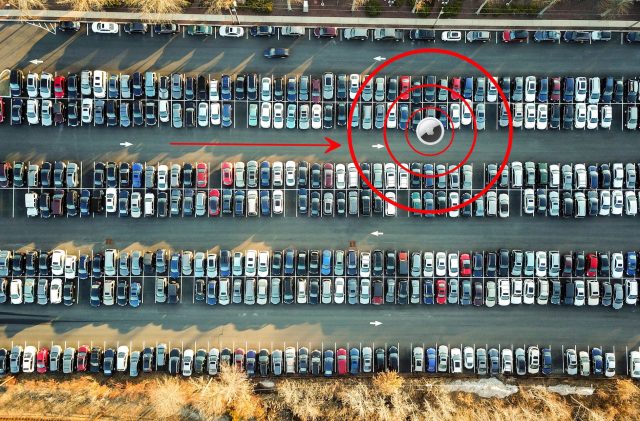
AirTags contrast sharply with GPS-based tracking devices, often used to keep tabs on people with dementia and track children. Such GPS devices work best outdoors, require frequent charging, are somewhat bulky (relative to an AirTag, at least), and have a recurring service fee. (The competing Tile products have the same advantages as AirTags, but Apple’s network of nearly a billion devices on its Find My network gives it a leg up in ubiquity. Of course, that ubiquity introduces safety concerns, too.)
We’ve written previously about the Find My network in general and how it works, Apple’s move to expand access to third parties, and the introduction of the AirTag. See:
- “How Apple’s New Find My Service Locates Missing Hardware That’s Offline,” 21 June 2019
- “Apple Opens “Find My” Crowdsourcing to Third-Party Accessories,” 9 July 2020
- “Apple Opens “Find My” Crowdsourcing to Third-Party Accessories (For Real This Time!),” 7 April 2021
- “Apple’s AirTag Promises to Help You Find Your Keys,” 20 April 2021
Now that I’ve had a chance to experiment with some AirTags, and Apple has released specifics on the intention and limitations of tracking, this article focuses on scenarios that attempt to think through the consequences of how people will use and misuse AirTags. There are many terrific ends to which AirTags will be put, and I believe those represent the vast majority of cases of how they’ll be used.
But Apple built in privacy for both the people who own AirTags and those who find an AirTag near them, including anti-stalking measures. These choices may prevent both legitimate and illegitimate uses. I get into the technical details in the latest version of Take Control of iOS & iPadOS Privacy and Security, with a significantly revised chapter on the Find My network and complete details on pairing and using AirTags, as well as other Apple hardware.
In this article, however, let’s dig into how people will use AirTags, starting with items that are lost, moving on to items that are stolen, and finishing with thoughts about stalking.
Something Lost
Bill’s Wayward Keys
Bill can never find his keys. He knows he should pick a consistent place to put them down or mount a hook inside the front door. Instead, he leaves them in a coat pocket, plops them on a table and drops mail on them, or somehow leaves them somewhere unexpected—like the bread drawer?!
Like this morning, when he searched fruitlessly after finishing breakfast. But this time, Bill had an AirTag attached to his keychain and an iPhone 11 Pro. He launched the Find My app, selected his keychain AirTag, and tapped Find Nearby. The Find My app started listening for the ultrawideband broadcast from his AirTag. Once it locked on, Bill walked around his home, looking like he was dowsing for water, as the Find My app nudged him in the right direction and lit up green when he was on track.
The app showed the distance as he closes in on his AirTag and displayed “here” when he was on top of it. He still couldn’t see it, so Bill tapped the speaker icon, and the item played some pleasant, recognizable tones to provide a little more guidance. Ah, there it is! Under the jean jacket in the pile of laundry.
Should Bill have been too far from the AirTag, or if there were too many obstructions in the way—like walls, books, or laundry—Find My would have picked up the more powerful but non-directional Bluetooth signal and provided some general directional aid. As he got closer, he could try tapping Find Nearby again to see if the ultrawideband signal could reach his phone.
Manjula and the Missing Messenger Bag
Meanwhile, Manjula knew she put her messenger bag down somewhere after setting out to drive home, but she wasn’t sure where. She remembered that she had it with her in the car but couldn’t seem to find it in the house. Fortunately, she had an AirTag zipped into a pocket for just this reason.
She brought up the Find My app on her phone and tapped her bag’s AirTag. It showed up on a map a couple of blocks away, where she parked her car, with the most recent update just a few minutes before. “Of course!” she thought, “I never brought it in!”
While AirTags rely on ultrawideband and Bluetooth for nearby location finding, enough people carrying iPhones had passed by Manjula’s parked car that the Find My network updated the position.
Nic’s Missing Laptop Bag
Across town, Nic was slightly frantic. They can’t figure out where their laptop bag is. The college student wondered: “Did I leave it in the library? At the coffee shop? In my friend’s room? On the tram? Aieee!”
Firing up Find My, Nic didn’t see a recent location for their laptop bag’s AirTag, so they tapped Enable under Lost Mode and entered their phone number. Through troubled sleep, they wondered if their computer was gone for good. But a phone call woke them up in the morning with good news: a library staffer found their bag while opening up the library. Because the staffer only had an Android phone, the AirTag wasn’t able to update its location with the Find My network.
However, the library staffer looked through the bag for ID, found the AirTag, and held it up to their Android phone, which read the AirTag’s RFID tag over NFC (near-field communication). The staffer then followed the link that the Android phone displayed to the AirTag’s serial-number page and called the number Nic had posted. Nic arranged to get it later from lost-and-found and fell back into a dreamless slumber.
Martyn’s Post-Bender Panic
Speaking of slumber, Martyn woke blearily after a bender with his friends. While he got home safely after getting a ride from a friend who hadn’t been drinking—and avoided making a mess in the backseat—he couldn’t find his jacket, which had his money, wallet, and other important possessions zipped into it, along with an AirTag. He had no memory of where he wound up as the previous night progressed.
Martyn’s iPhone rang—at least that was in his trouser pocket. It was his friend Rafael, who was driving around when his iPhone displayed an alert that an AirTag was “moving” along with him. He tapped the notification, tapped Play Sound, and found Martyn’s jacket balled up under the passenger seat. “Do you want it back now?” Rafael asked. Whew!
Ruth Bader Ginspurr Escaped the House
Tracy was despondent. Her cat, Ruth Bader Ginspurr, had apparently slipped out the door when nobody was watching. She was not an outdoor cat, and the last time she’d gotten out, it was a week before a neighbor found her, hungry, pitiful, and worse for wear.
Ruth wore ID tags, but Tracy had also recently equipped her with a collar designed to hold an AirTag. In the Find My app, she saw that Ruth’s AirTag was most recently seen in a grove of trees in a park full of iPhone-toting runners. With Ruth’s favorite squeaky mouse in hand, Tracy went to the park, squeezed the toy a few times, and spotted Ruth—and grabbed her for the walk home.
Something Stolen
Chai’s Snagged Bag
It was only a minute. After waiting two weeks after her second COVID-19 vaccination shot, Chai had ventured out to sit in a café for the first time. She set her bag down under a table for a moment in a mostly empty coffee shop and went to wash her hands. When she came back, the bag was gone. The barista had been leaning down to clean the espresso machine and didn’t notice someone come in and snatch it.
Chai’s MacBook Air, sketchbook, and various sundries were in the bag, along with an emergency $20 bill and an AirTag, but she had taken her phone with her to the restroom. She pulled up the Find My app, marked the AirTag as lost, and watched for updates. Minutes later, she received a ping. She thought about calling the police but figured they wouldn’t come fast enough to help and decided to look for the bag on her own, promising herself that she wouldn’t put herself in potential danger by getting too close.
As she approached the location marked on the map, she tapped Find Nearby and started to get location information. Surely it couldn’t be down an alley? And that seemed dangerous. But when she got closer, she realized her bag was on the ground, and there was nobody nearby. She grabbed it and found that her MacBook Air and emergency cash were gone, but the sketchbook and everything else remained in place. She used Find My to send a signal to erase her MacBook Air, should the thieves connect it to the Internet again, and called her insurance company.
Sorry, Charlie
Charlie was less lucky. His backpack containing an AirTag was taken by someone who spotted an open window, climbed up part of a wall, and grabbed it out of his house. He could see briefly where it went in Find My, but then it disappeared. He never found the backpack or received any tracking updates, so he assumed the thief was clever enough to search the backpack and either remove the AirTag battery or smash it.
Fenchurch’s Double AirTag
Fenchurch left not one but two AirTags in her car. Living in a city with a high rate of car theft, she thought perhaps hiding AirTags could be an extra deterrent in addition to the car alarm, the electronic ignition–disabling technology, and the steering wheel lock. Sadly, her car was stolen—but her bet was good. The AirTag that she’d placed in the glove compartment, where it was easily found, must have been tossed out the window since Find My helped her find it in the mud on a parking strip.
But she’d hid the other AirTag with the spare tire. She assumed the thieves didn’t receive alerts that would have made them aware of the AirTag’s presence—they must not have owned iPhones—but enough people passed nearby to produce location updates. Fenchurch called the police, who became interested when they realized that the car was ostensibly located in a seedy industrial area. They checked out the address and were able to recover Fenchurch’s car while shutting down the chop-shop operation.
Bad News, Vicente
The hidden AirTag strategy worked for Fenchurch, but Vincente had less luck. He had taped an AirTag to the underside of his dashboard, figuring it would be hard to find. However, the thieves who stole his car one night must have been carrying an iPhone that was recent enough to display an alert.
He deduced that because when he woke up, even before he could mark the AirTag as lost and call the police, he saw that the location in the Find My app of the AirTag was several blocks from the parking lot where he’d left it, tagged with a timestamp of 11:53 PM the previous evening. While waiting for a call back from the police, he went to the location on the Find My map, and his car wasn’t there—nor was an AirTag lying on the ground. He figured the thieves received an alert about an unknown AirTag “moving” with them as they drove off in the purloined vehicle. They probably then found and destroyed the AirTag before any other iPhone could reveal its location.
Whatever the case, the AirTag never appeared again. Nor did his car!
Someone Stalked or Tracked
Yuen’s Ex-Boyfriend
“Where was that beeping coming from,” Yuen wondered. He couldn’t figure out what he owned that could be making the noise. He finally unzipped and emptied out every last pocket in his backpack—and discovered something he didn’t remember. A small bag, cinched tight. When he opened it, he found a round button with an Apple logo.
Searching via Google, Yuen discovered it was an AirTag—and that he could scan it with his Android phone. When he tapped it to his phone to view the associated Web page and realized what it was being used for, his blood ran a little cold. Was this planted by his jealous ex-boyfriend? The controlling person he broke up with for just this sort of reason? Yuen noticed the link Apple provided about contacting law enforcement.
With the help of a law clinic and local police, Yuen was able to prove that his ex had purchased the AirTag—the serial number helped—which led to charges and a restraining order.
Annelise’s Nosy Neighbor
Annelise had had enough. A neighbor kept conveniently showing up “accidentally” at regular intervals in other parts of town when she went out for coffee, to meet a friend, or to shop. It was too much, and she suspected that she was being stalked. She had read online about how her iPhone could be used to track her and consulted some technical friends, too. But between her online research and her friends’ analysis, it didn’t seem to be hacked. Sometimes she left her iPhone at home and just relied on her Apple Watch, and the neighbor still appeared.
Then she realized she ran into the neighbor only when she drove somewhere, not when she walked, biked, or rode with someone else. With the help of a friend and a Bluetooth-scanning app for her iPhone (like BLE Scanner), she scoured her car and eventually found an AirTag hidden inside the lining of one of the seats. “Well, that’s creepy,” she thought. She must have left the car unlocked at some point, allowing him an opportunity to hide the AirTag inside—or, worse, he’d broken in without her knowing.
Reading up on Apple’s website, Annelise thought that she should have been notified or that the AirTag would have made a sound at various times. But after checking her iPhone’s settings, she realized that she had disabled the Find My network option in Settings > Account Name > Find My > Find My iPhone. When Apple added the Find My network in iOS 13, she was weirded out by the thought of participating in a global tracking network. But that choice also meant her iPhone wasn’t monitoring for AirTags that traveled with her.
And, because Annelise parked her car near both her house and the neighbor’s, the AirTag reassociated at least once a day with the neighbor’s phone. If she had taken an extended trip with her car, the AirTag might have started beeping. Due to the pandemic, she rarely drove anyone in her vehicle, so no friend with an iPhone would have seen the alert, either.
She was about to move out of town in any case, and she decided to leave her apartment and stay at a friend’s place for the remaining time she had—after she removed the AirTag, visited the police station, and filed a report.
A Package for Betsy
Betsy had never liked people she didn’t know well having her home address. She was a private person and had had incidents with over-eager boyfriend and girlfriend wannabes. Nothing terrible, but it still put her off having her address in circulation. So she used a package-delivery storefront for her mail, which provided the added benefit that her packages were never stolen from her apartment building’s mailbox area.
But one day, she picked up a small box from an unknown sender. When she brought it home and opened it, she found it contained a relatively expensive purse she’d mentioned on Facebook but felt she couldn’t afford. A secret admirer who asked around for her address and got it from a friend?
While checking out the purse, she felt an odd lump. Sewn into the lining was an AirTag. She knew what it was from Apple’s marketing and found the experience unsettling. Someone could have known when she arrived at the package store, her path home, and where she lived. Who would do that?
She looked up the AirTag’s serial number, removed its battery, and decided against calling the police for the time being. But she did post a subtle message on Facebook that made it clear she’d found the tracker and was perfectly capable of taking the next step to identify the sender. Fortunately, nothing ever came of it.
Florian’s Mystery AirTag
Florian had a disturbing message pop up on his iPhone: “AirTag Found Moving with You,” with the annotation “The location of this AirTag can be seen by the owner.” He panicked for a moment. Who wanted to know where he was? Why was someone keeping tabs on him? He tapped the notification, and a more complete message appeared, including the first time the AirTag was found near him—1:30 PM—and the message that it “may be attached to an item you are borrowing.”
“D’oh!” Florian slapped his forehead. He had borrowed a duffel bag from his friend Asok. He looked inside a zipped pocket, and there was an AirTag. He texted Asok: “Busted! Dude, you’re tracking me!” Asok texted back an emoji of a tongue sticking out and the message, “Sorry! I forgot I always leave that in there!” Florian tapped Continue on his phone and tapped to disable notifications for a day.
Better for Some Uses Than Others
I’m just scratching the surface of the cases in which AirTags will be used and abused. It seems clear that Apple needs to refine some of the features in the system. The length of time before an AirTag makes noise, how quickly you’re alerted to an AirTag traveling with you, and the fact that a setting can disable such alerts all need more thought.
Some of the gaps in knowing whether you’re being tracked are large enough to enable abusive behavior that Apple wants to prevent. The Washington Post’s Geoffrey Fowler tested being tracked with permission, and he found a number of loopholes and exceptions that clever stalkers and abusers could exploit.
On the plus side, the record keeping and association of AirTags to individuals makes it relatively easy to figure out who owns an unwanted tracker and what behavior that person has engaged in. A stalker would, at a minimum, have to create a throwaway iCloud account and use it with a disposable iPhone or iPad to track an AirTag to avoid creating an overt trackable connection. That’s a lot of money and effort, and it might still be difficult to avoid providing identifiable information unintentionally. (Abusive people aren’t always great at anticipating consequences, but some are keenly aware of how readily they can be identified.)
AirTags also don’t help much when it comes to deterring or tracking theft. They aren’t a deterrent because they have to be hidden to avoid being destroyed. And when it comes to tracking a stolen item, the combination of iPhone alerts and general suspicion will probably result in the thieves finding and destroying the AirTag in quick order. Though, as I pointed out above, you might be able to recover a stolen bag minus its cash and electronics.
Happily, Apple seems to have designed the system to be open to adapting, maturing, and improving. The overwhelming majority of uses of AirTags and the Find My network will certainly be positive ones. The goal will be to block malicious uses more effectively without diminishing the value of the entire system.
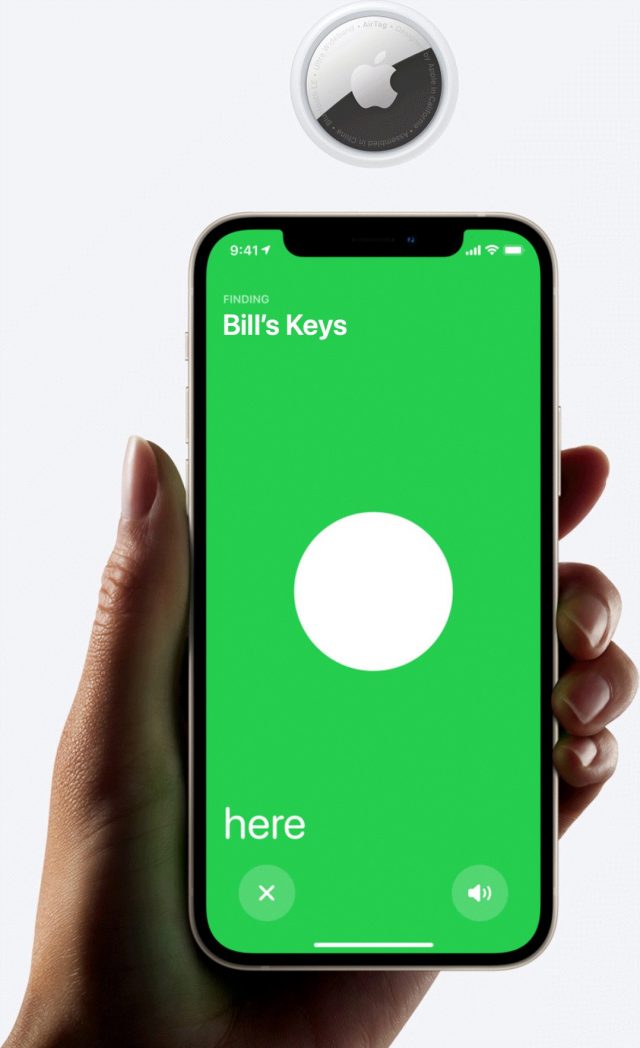
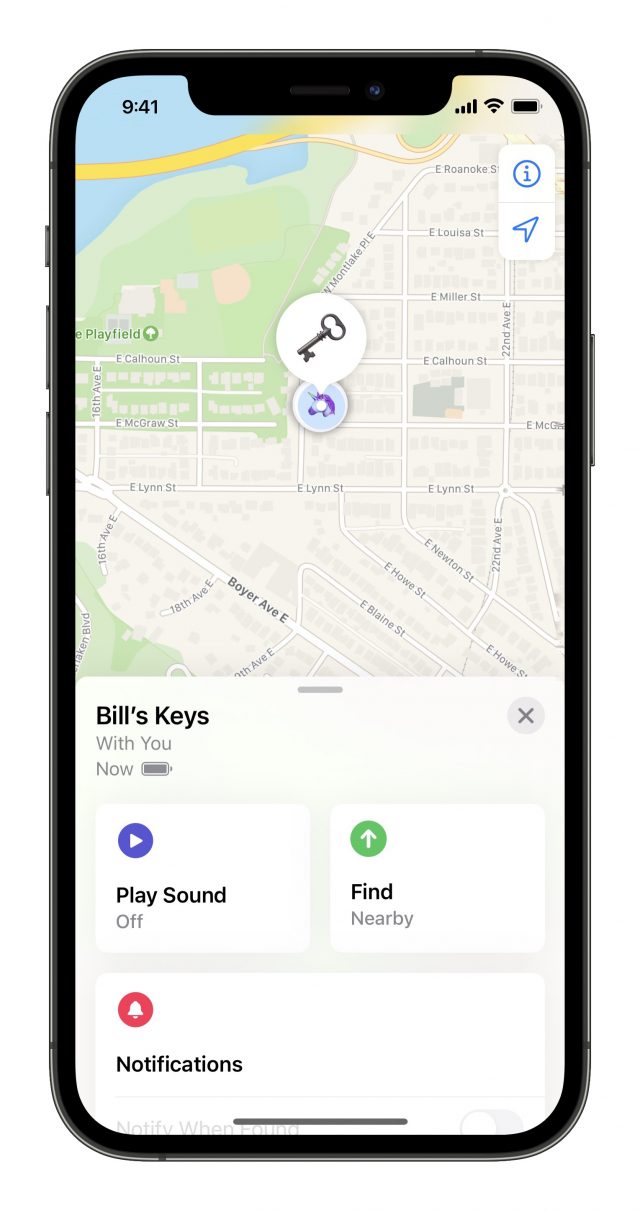
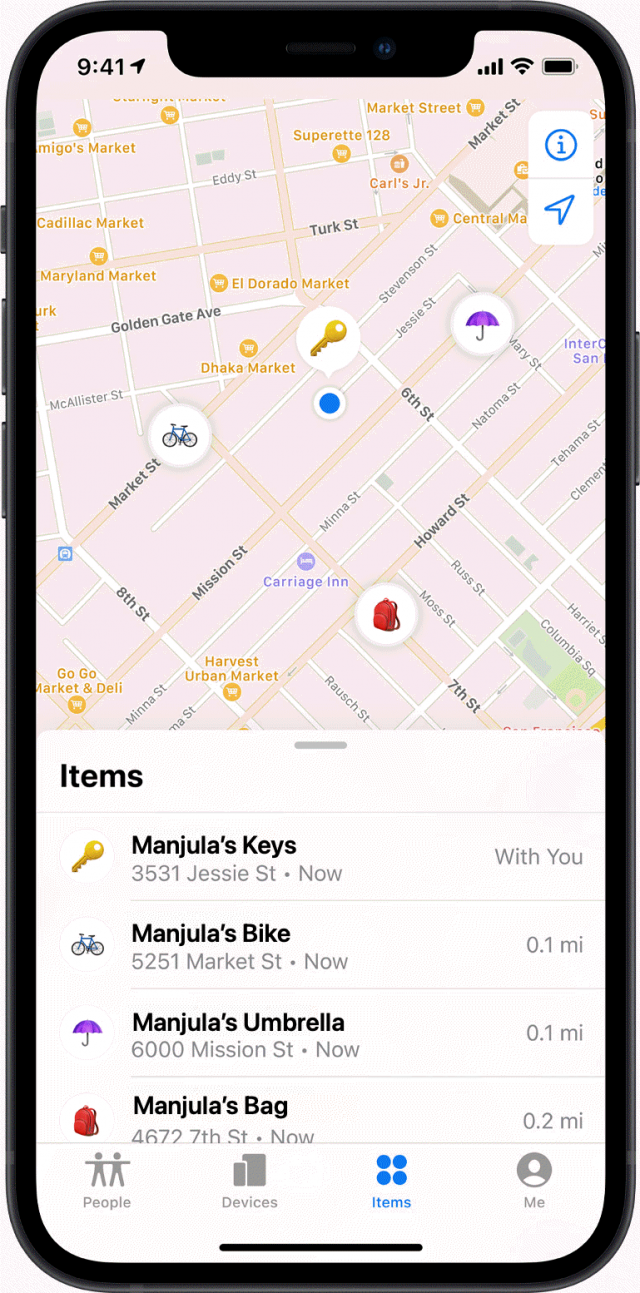
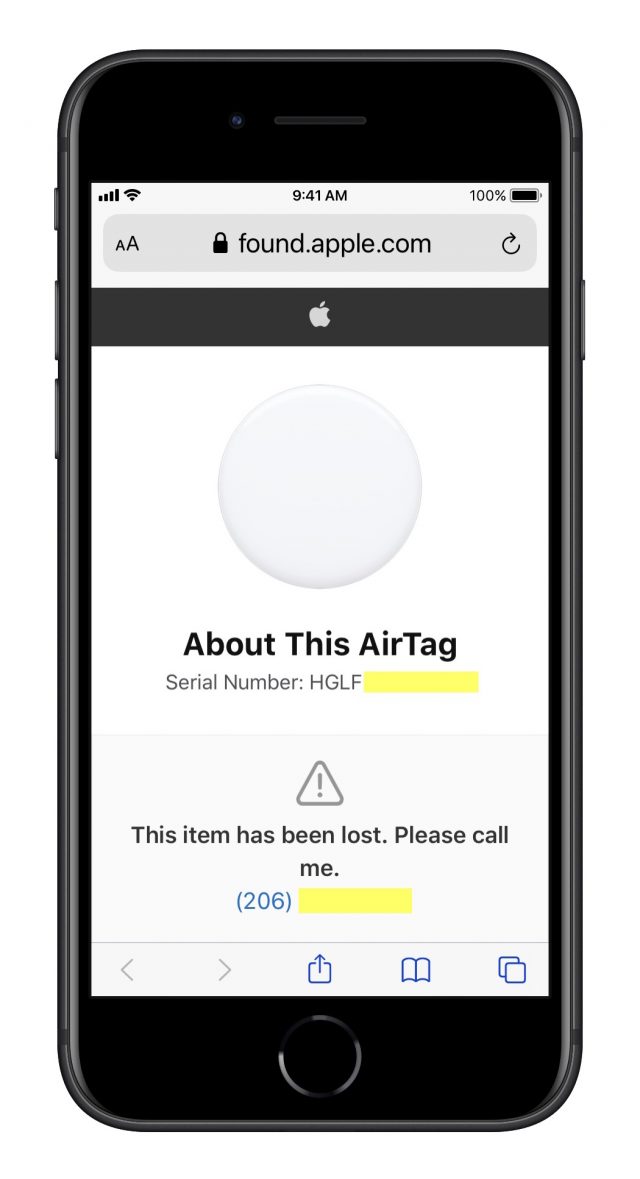

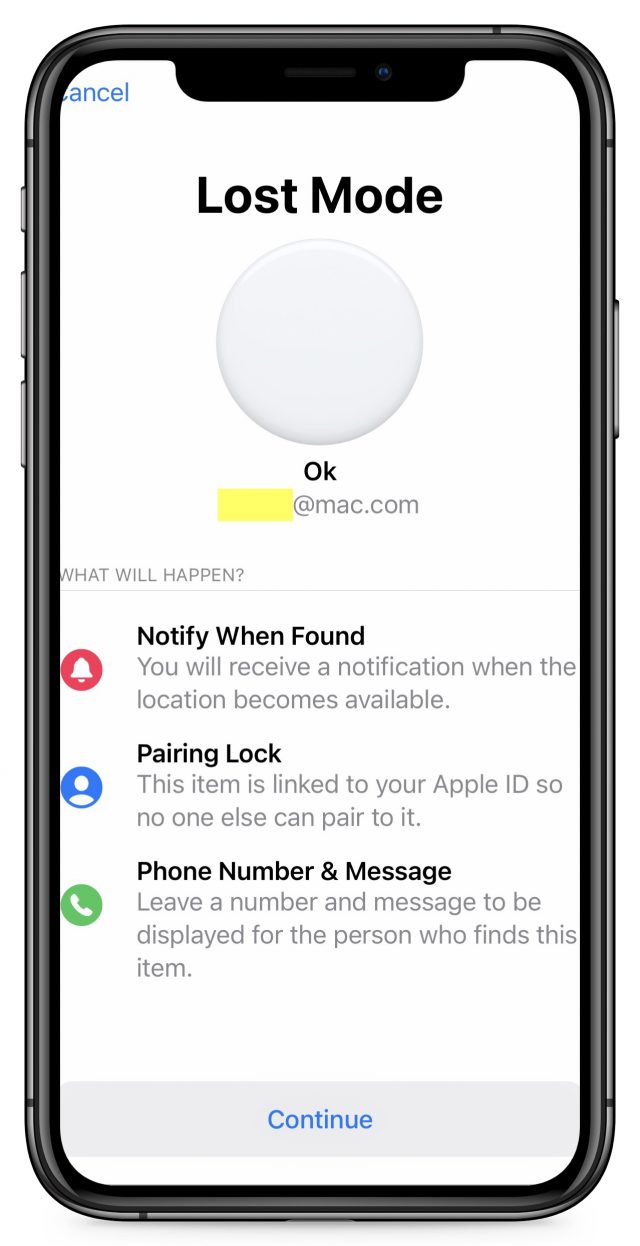

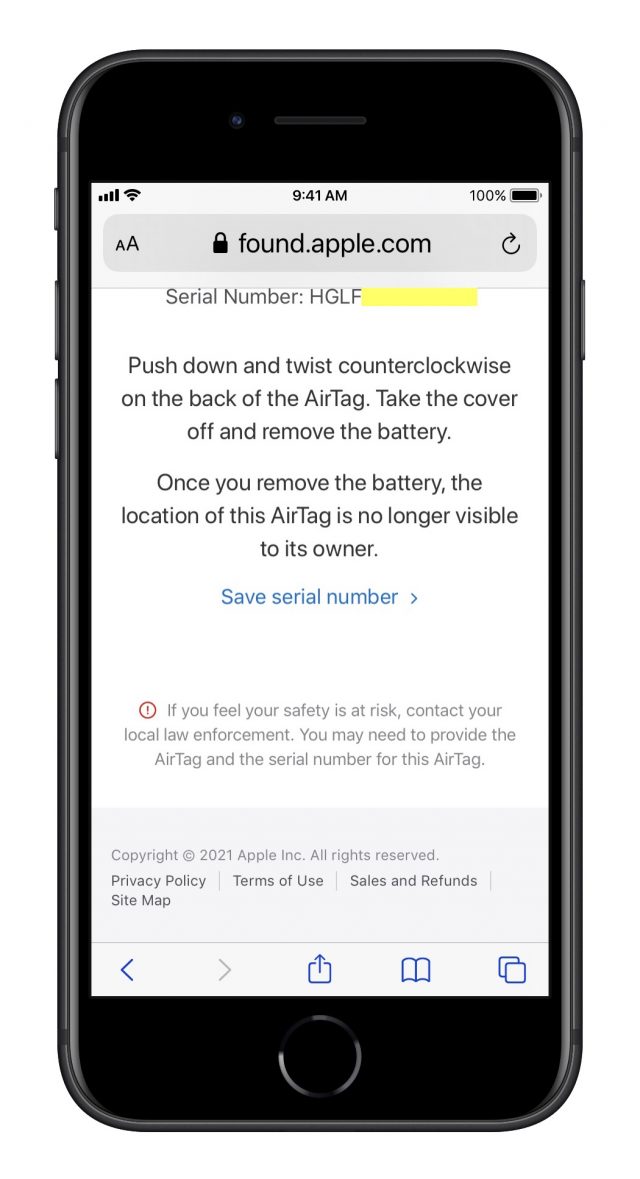
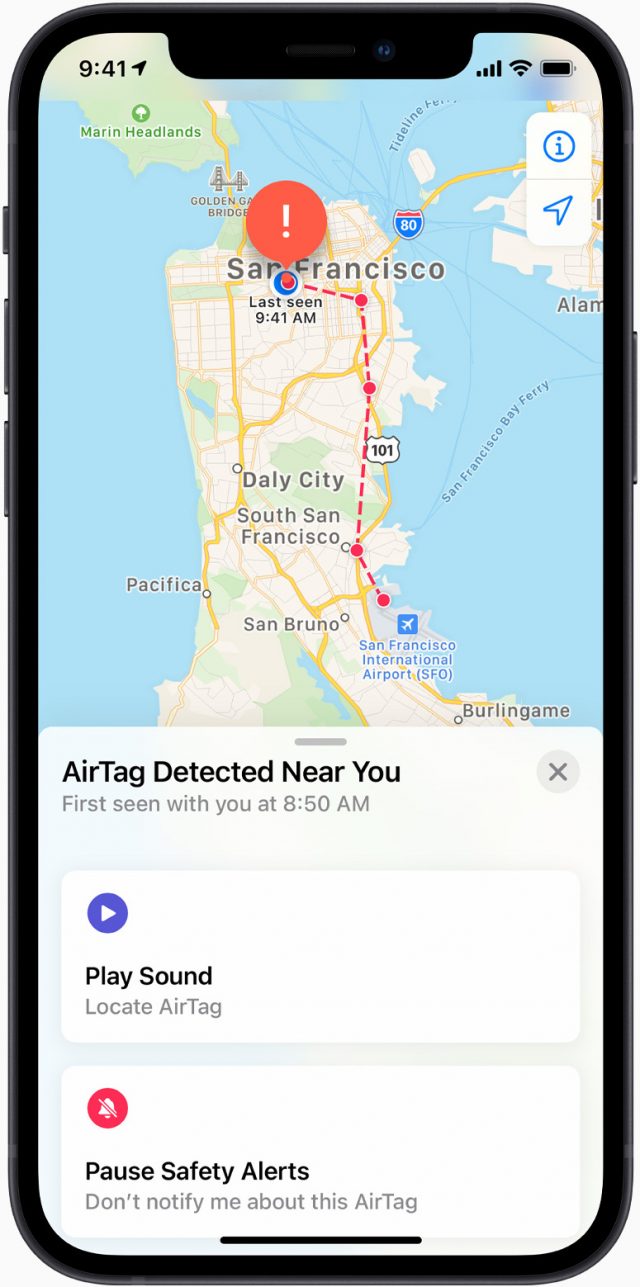
What a useful outline, Glenn. Thanks for that. Lots to consider as I purchase a flotilla of them for the clan here.
iCloud security becomes even more important for Apple, I’ll have to review the uptake of 2FA within my family.
Lets assume AirTags takes off and Apple sells a billion of them. Then I can imagine a scenario where one’s iphone records encounters with dozens of (other people’s) AirTags during the course of a day, and then relaying the locations back to Apple. This means that it has to turn on the power-hungry gps each time to record the location (which reduces battery life) and also use up your cell data if you’re not on wifi!
Core Location doesn’t work that way, though.
The amount of data involved is minuscule. And you can opt out: just disabled Find My network in iOS, iPadOS, or macOS, and your device won’t relay location information of Find My items.
Your article brought up one use case I hadn’t thought of, finding your car in the parking lot. With an “old” iPhone X, would I likely be able to find my car in a multi-level lot and I mean the kind that continuously spirals up or down?
Would it be better if my wife and I used different AirTags in the car for this use? If so will we be getting annoying beeps about being tracked by our spouses. Sometimes I don’t use the car for as long as a week.
Currently my car isn’t worth enough to worry about thief.
Possibly. If your AirTags check in with the associated owner every three days or more frequently, they won’t beep. However, you will get the “moving with you” alert in the right circumstances, though you can disable that settings entirely in the Find My app (tap the Me button) or you can dismiss it or pause notifications when it appears.
But AirTags don’t work with Family Sharing or other people’s devices. So you can only see the current position of an AirTag registered to your own iCloud account.
Even the latest and greatest iPhones get really warm when you constantly run their GPS. Not a problem if you’re driving and the iPhone is hooked up to power, but if you’re on a trail and not lugging around an extra battery pack it’s definitely an issue. Efficiency may be better, but GPS location gathering is still a battery killer, there’s no denying that.
That’s not opt-out. That’s all or nothing. I don’t want to give up using Find My to locate my wife via her iPhone downtown. I still don’t want to relay AirTag information to Apple. Why should I? I don’t have AirTags and they’re not paying me to work for them. But of course Apple doesn’t expose that kind of granular choice. Bummer. I guess because they want all iPhone users to work towards their Find My relay network, not just those that opt in. Funny how when its Facebook and data gathering, they feel very different about forcing people to submit than when it’s about forcing them to work towards expanding Apple’s reach.
Glenn - would it be possible to put an AirTag on a golf ball? That would be really useful to me.
One of the things I most would want it for is helping my father keep track of my fairly demented mother and while I arranged so she could use an old iPhone, it won’t work unless the tracker is really small enough so we can be sure it follows her. But the alerts these makes would defeat the purpose (to some degree). Now she is not having an iPhone with her. One needs a way to permanently turn off these notification when it is carried by someone without a phone.
Anything is possible, given enough glue.
Of course, the ball will no longer fly properly, will definitely not be within game regulations, and the tag will probably stop working after you hit it the first time.
Another way is to turn off the BT radio if you don’t use it when you are out and about (I believe that you can toggle it with Hey Siri, turn on Bluetooth). Because these devices are using BT to connect with devices, this should stop tracking other people’s iPhones, iPads, and AirTags (and the third party devices licensing this technology). Of course, this also makes tracking your own iPhone harder if you happen to lose it.
Running the map in the foreground with the screen on isn’t the same as using the GPS function, and it varies when you’re in a city and in the countryside. It’s not a battery killer—apps that rely on GPS heavily and remain active in the foreground are.
That is incredibly specious.
Only if you didn’t plan to strike the ball.
But Find My network equipped golf balls could be a big seller from a third party.
Yes, it might suffice for this, although there are privacy and legal reasons that Apple hasn’t optimized it for human tracking. It’s not reliable enough, really. I can’t see a future in which Apple makes person tracking try to provide fewer alerts, because that would lead to its increased abuse.
My first thought was that as well, though, of course, more expensive. But with further thought I guessed that the golf ball manufacturers probably prefer it when golf balls are hard/impossible to find.
That’s incorrect.
What they are saying is that in order to continue to do with your own devices (entirely independent of other iOS users) what you used to, you now need to opt in to relaying to Apple information related to other people’s gadgets. And that’s just not OK.
Leave me alone with the whole AirTag tracking business. If you guys want to get into all your tracking/stalking issues, go right ahead, but leave me out of it. That said, leave me Find My for my own iPhones just as it’s always been. That’s not too much to ask.
Forcing people to submit by threatening removal of functionality in my book is coercion. Of course they want their tracking network to be as extensive as possible (and that requires every iOS user play along), but on my device their wish definitely doesn’t carry more weight than what I am willing to accept.
I could just turn off BT, but since Apple didn’t equip my iPhone with a headphone port, I went out and bought AirPods Pro. And of course without BT, those become $250 landfill. Another nice ‘nudge’.
Apple does not sell any of the info they gather from Find My to third parties, and they will not be used for commercial purposes. Everything is encrypted, and the data is 100% anonymous.
“ Third-party products must adhere to all the privacy protections of the Find My network that Apple customers rely on. Approved products can be added to the new Items tab and will feature a “Works with Apple Find My” badge to clearly communicate to users that the product is compatible with the Find My network and the Find My app.”
And AirTags can only be set up and used by their owners, minimizing the chances of stalkers using them to track unsuspecting victims. There are also more privacy features. And AirTags will make a noise if they are wandering around away from an owner for a while. It’s nothing even resembling what Facebook or any other social network does, internally or externally.
Yes, I get the problem, but maybe it could be handled through family sharing … we will see what happens there.
It’s not “your own devices.” You’re using their global network that is an optional service provided by other owners of other devices. The information is secured in such a fashion that details cannot be extracted by Apple (both in their documentation and so far, by security researchers).
If everyone chose to not relay Find My data, then the network stops working. It’s crowdsourced information, not entirely voluntarily (since it’s enabled by default).
That’s a really odd way to look at an optional add-on feature that requires participation of other individuals with agency about what they do!
Turning Bluetooth off would also disable your device’s ability to advertise its location; turning off the Find My network would accomplish the same function without losing Bluetooth functionality.
I think you may be having a spot of confusion. Maybe that explains why you believe functionality is being removed. Find My now exists in two forms:
If you look in iOS/iPadOS Settings and macOS Find My settings, there are two distinct options. You can enable traditional Find My without enabling the Find My network. Thus, you have the classic Internet-based two-way finding option while completely opting out of the one-way location-reporting option.
AirTags only use the Find My network. iPhones, iPads, Macs, and Watches can use both. AirPods Pro and some Beats headphones use Find My locally only, and aren’t accessible via the Internet or via the Find My network.
Well thank you, @glennf. This is the first time I’ve heard about two separate settings. They’re a bit hidden on my iPhone, but indeed they appear to leave an option for Find My for your own personal devices (“traditional Find My”) while not having to participate in the global Find My network. I stand corrected. Different naming might have helped prevent confusion here.
I’ve written so much about Find My and AirTags, I forget that people rarely look at nested settings! I agree on the naming. It should be Find My Device and Find My Network or something. Originally, Apple called the network “Offline finding,” and then rebranded it all somewhere since last fall to Find My network everywhere.
So…so Airtags support Family Sharing in iCloud or are they unique to an individual iCloud account. Seems to me that sharing them via Family Sharing so that my tags and her tags become our tags instead. Yes…it means one could stalk their wife but if users could opt out of family sharing on a per AirTag basis that would make them more useful to a family group…and it would also solve the posted scenario of one in her car and one in my car but since either of us drives both on occasion (well, not actually quite true for my wife and I…I we’re together I always drive and we take my car unless we take hers for the extra space but she pretty much only drives hers) then the tag could check in with either of our phones.
Glenn, thanks for the tip.
The ‘Find My Network’ switch is hidden in the ‘Find My’ sub-preference of the Apple ID preference on mobile devices. When you tap the Find My carat, the top option says ‘On’ if you have, in fact, enabled it. However, when you tap carat after tha , you discover that in addition to the Find My Phone switch, there are Find My Network and Send Last Location switches, whose states are not represented in the options shown earlier.
Furthermore, even if you know a ‘Find My Network’ options exists, it does not show up when you activate a Search at the Settings level.
The UI leaves something to be desired.
For whatever, they are initially not part of Family Sharing. That is likely because there’s an end-to-end security protocol employed that’s not used for any other Family Sharing purposes.
If you use iCloud Keychain, the People album in Photos, and a few other features that rely on iCloud for syncing, Apple uses end-to-end encryption in which all of your devices use a secure method to hang out keys among themselves that leak zero knowledge to Apple of those keys. They do know which devices are logged into iCloud. The synced data is encrypted at each device using encryption information they all share. It’s not decrypted while in iCloud, and iCloud.com doesn’t provide access.
Find My relies on the same sort of thing for the networking feature. You can only use it from a Find My native app, and you cannot use it if you don’t have at least two devices or items: the lost item or device can only be located by having shared encryption information.
Thanks Glenn…makes them a lot less useful than they could be.
I think it’s a bit part of the tension between utility, abuse, and privacy. Kind of why we published this article, to tease those issues out a bit and figure out what the best uses are.
My wife has agreed to take an AirTag with her on an upcoming car trip partly out of curiosity for her and me about it tracking! I could also de-pair one and give it to her so she could more easily find her car in a strange city after parking it.
The de-pairing part might be underrated. It’s a little irritating to reset them (it requires a repetitive act), but because there’s no long-term data stored by them or your devices tracking them, you can think of them as utility objects, and distribute and re-distribute them among family.
Given Apple allows Find My to track people over the Internet who have opted in, it’s plausible that they might expand the security model and update how they handle encryption to provide an opt-in that’s very similar to that Internet-based tracking option.
Oh no. I forgot to update the firmware on my golf ball. It’s now out of battery.
Thanks. Nothing I’ve read until now mentioned this. But I see it right now on my iPod’s settings:
Apple Maps already has a Parked Car function that shows the location of the car when the iPhone Bluetooth disconnects from the car system. It will be interesting to hear how the Airtag improves accuracy/reliability for this feature.
AirtagAlex the same man that @ace tipped us about have shown on youtube how to remove the speaker coil from the Airtag. https://youtu.be/sgGNShP9H8A
I don’t have AirTags, but after reading your brilliant novel on their use maybe I will. Great writing. Thanks so much for publishing it.
If you’re not using Apple Maps in that configuration, then you don’t get the feature. I use Google Maps, and if I’m navigating and then park, it does seem to drop a pin. And then sometimes, perhaps if the background location engine stops or other factors, it loses the pin.
Yeah, that is great for stalking. It also prevents someone from using the Bluetooth-based option that appears when an AirTag is detected moving with them where they can play a sound.
I am not impressed. He broke the retaining clips when opening it - something that iFixit warned aginst in their teardown. Which means he was forced to glue it shut, meaning you can’t get back in again, should need to, without creating even more damage.
BTW, iFixit’s video for how to drill a hole (to attach a key ring) pops out the speaker magnet much more easily:
I’m not sure that Vicente‘s situation is accurate. From what I’ve been able to gather (from https://www.reddit.com/r/AirTags/comments/n4022r/airtag_faq_updated_weekly/ among other sources) AirTags don’t alert the iPhone of a person they’re following until it reaches their home or other frequented location. So now you know where your car thief lives, which should be useful information for the police. At least, that’s what seems to be the case. Do you have official information to the contrary?
From the Reddit article:
I haven’t seen anything indicating that’s the case and the FAQ doesn’t cite a source. Note later in the FAQ that this appears to be the result of a single bit of writing:
We do research what we write, and that FAQ isn’t authoritative, though it is a great compilation of information.
According to Apple’s official documentation, you might be aware of an AirTag only in two circumstances:
Note also that we don’t update older articles unless there’s something dangerous or misleading in it (Adam can tell you more about that), and Apple has already started tweaking AirTag features. So it may be that in the future, these scenarios will sound way off base.
As of yesterday, Apple added the last four digits of the registered phone number associated with an AirTag’s owner’s Apple ID account to the “found” page that is linked to via an NFC tap. That seems to provide more accountability, as someone using an AirTag to track anonymously now has the issue that someone can find it, tap it, open the URL, and see part of a phone number—which the stalked party might recognize, or the police might be far more happy to take seriously since it’s data they can act upon.
Here’s the semi-official source I originally got this from: https://youtu.be/DEbm2iG1TNU (starting at about 6:00).
Wild. That is not documented anywhere, and the folks who have tested it don’t seem to find it only works at home or known locations. Arguably, it’s an extraordinary bad choice: you don’t want someone to track you home at which point you’re notified that you’re being tracked. It seems like you’d want to know that as soon as it’s moving with you for more than a moment or so or over some distance.
Interestingly, Apple has been putting this out in statements since AirTags were released, but has no updated any of its support documents or other information. Here’s a paraphrased (not directly quoted) comment of the same sort to Fast Company on April 29:
What I’m wondering is whether part of them not disclosing specifics, is if there is a filter: as you approach home or other frequently visited locations, does your iPhone or iPad stop relaying information from a specific Bluetooth ID until you’re alerted? Because an iPhone or iPad that’s not associated with an AirTag can only send a Play Sound message via Bluetooth, there doesn’t appear to be a way to suppress the AirTag broadcasting (so other people with iPhones and iPads around you keep transmitting the item’s location).
This seems even worse than what the documentation states.
However, I can see the philosophy there: it reduces false matches in public places—like public transportation. Otherwise, someone carrying a bag with an AirTag in it that doesn’t belong to them would trigger “an AirTag is moving with you” alert for 100 people…
It also means that there’s at least some degree of theft protection. If it doesn’t alert until it reaches a frequented location, you can at least know roughly where the thief lives or works—presuming that information is transmitted back to the owner of the AirTag…or at least available to the police with a warrant.
On the other hand, that may be exactly the information a stalker is interested in, as you describe in Betsy’s scenario. It’s a difficult balance.
Keep in mind that this really doesn’t make AirTags bad. Someone who wants to slip a tracker into your belongings can already do so with any number of devices from other companies, many of which have cellular modems and GPS and can be far more invasive than an AirTag.
It would be nice if Apple could make it impossible to use an AirTag to track a third party, but I suspect this is something that is really hard to do without crippling its primary functionality (using other people’s phones to help locate your stuff.)
They have relatively short battery lives and are much larger, require ongoing service plans, and are easier to discover—and for the person using them to be tracked down, because of the cellular connection aspect (and subscription and payment). An AirTag has a battery that can last a year! And works well inside near iPhones, iPads, and Macs, where a cell-based GPS tracker typically does not.
Yes, but how does that have a practical impact?
It would surprise me if anyone is interested in long-term surveillance. And those who are almost certainly have access to specialized equipment designed for the job.
Someone looking to track another person probably has an immediate short-term need to do so. A device with a limited lifespan will be just fine. They can duct-tape it to the underside of your car and track you for the amount of time they require.
The lifetime is pretty short unless it’s very bulky. However, I think AirTags will almost all be used for good, not evil. It’s just that they have a very specific use case that’s insidious and simpler (and cheaper) than GPS trackers.
One of the scenarios that domestic-abuse specialists have played out is where a partner (current or ex) has or had access to someone’s phone. So they disable the notification feature in Find My and then sew or conceal AirTags on and in the partner’s stuff. That gives them up to a year of tracking, particularly if they can arrange within every three days to be near enough to the person’s unknown AirTags to reset the three-day alarm.
All of this seems awful and insidious, but it’s unfortunately what 1,000s of people, maybe far more, engage in every day in their abusive surveillance of other people.
We reached out to Apple and got a little more detail, which I’ll be writing up in an article. Thanks for being dogged about this, as there’s a gap between what AirTags do and how Apple documents it and talks about it.
The additional bit of nuance is that if you have an AirTag moving with you, if you don’t arrive at home (the Me card in Contacts) or a “significant location” on your iPhone/iPad in a given calendar day, at the end of the day (precisely when, not defined), you will also get an alert about an AirTag traveling with you.
(Significant Locations can be found in Settings > Privacy > Location > System Services > Significant Locations. I have 23 defined!)
Well then! That’s certainly new information!
I really want a definitive writeup as to just exactly how effective these things are for tracking/recovering stolen items, but Apple’s being really cagey about that aspect, just saying “that’s not the intended purpose.” Well, sure, but that doesn’t mean it won’t happen—or that people won’t buy them for that reason. But I guess we’re just going to have to wait for extended testing to give us the answers.
Thanks for following up on this.
I had no idea these existed, and they all seem to be quite recent—my oldest is from Jan 2021. But I have a bunch, and they do seem relatively correct in terms of being “significant”—they’re all stores I’ve visited, or places I park to go for a run, or that sort of thing.
And there are enough of them—I have about 30—that getting an AirTag safety alert at one of them would likely happen relatively quickly if I was out driving.
I have one for a sushi restaurant I was at once a few weeks ago for about four minutes standing outside to pick up a meal. I guess iOS thinks that was significant!
Siri likes sushi.
Well in my book, good sushi is always significant!
Interesting story about using an AirTag to recover a stolen scooter (hat tip to Daring Fireball).